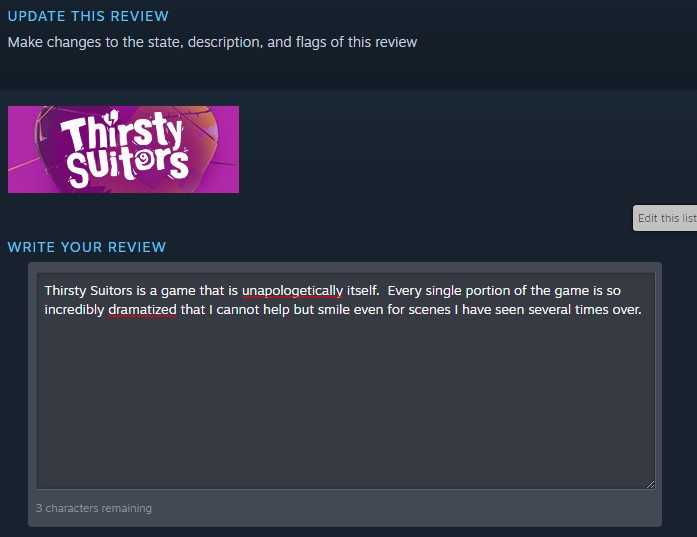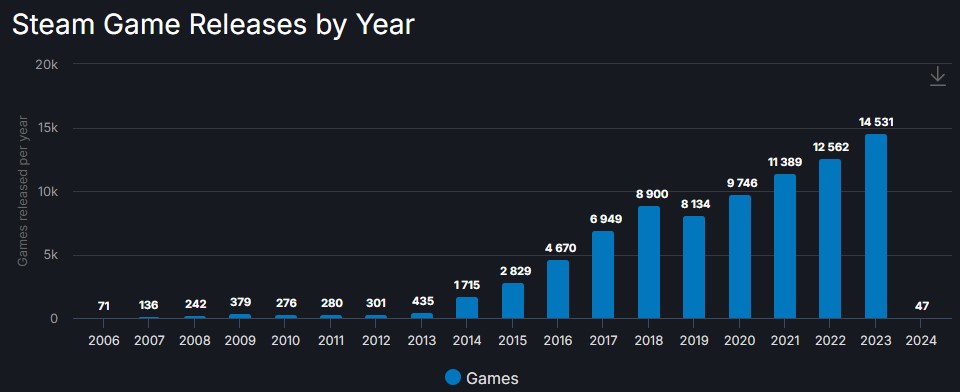In the ever-evolving world of video games, Steam stands out as a wonderful, yet chaotic, marketplace. This past year, we've witnessed a surge in new game releases on Valve's popular platform, with numbers soaring to over 14,500. Let's dive into what this means for us and developers alike in the epic universe of Steam.
- Steam saw a staggering 14,531 new game releases in 2023, averaging about 50 games each weekday.
- This number marks a significant increase from previous years, with nearly 2,000 more games than in 2022 and a 5,000 game increase over the last five years.
- The vast majority of these games struggle for visibility, with Steam's algorithm and layout often burying new releases.
Steam's massive influx of new games presents both opportunities and challenges. On one hand, the platform offers a democratized space where any developer can release their game for a $100 fee; Which is even more tempting for people producing games people don't want publicly in their libraries thanks to a December update. This openness has led to a diverse range of games being available to the public. However, this also results in a cluttered marketplace where the sheer volume of games makes it nearly impossible for individual players or even gaming websites to keep up with the new releases.
The consequence of this flood is that most games, regardless of their quality, stand little chance of being noticed. This situation is exacerbated by Steam's reliance on algorithms over human curation, making it difficult for deserving games to surface above the tide of daily releases; Steam's Curator function is effectively nothing more than a meme at this point.
For dedicated gamers and industry observers, navigating Steam's interface to find new and noteworthy games is a complex task. The process involves several steps and filters, including language and content type selection, to reach an unfiltered list of new releases. Yet, this effort is often necessary to sift through the overwhelming number of mediocre or low-effort games to find the hidden gems. Personally, I despise how long it takes to find co-op multiplayer games at times, when I only do so a couple of times during the year.
The role of external factors, such as viral marketing, influencer mentions, or targeted PR efforts, becomes crucial in this environment. These elements often determine whether a game breaks through the noise of Steam's crowded marketplace.
Valve could potentially address these issues by adjusting their current human curation system, by enforcing some level of quality among contributors. Such a move could significantly improve the discoverability of quality games and enhance the overall user experience on Steam, though if specific curators were pushed too heavily that could cause quite a bit of bias. Instead, it would make sense to let people more easily find curators that align with their own favourite games for better chances of good recommendations.
And yes, I'm a little bit salty about how curators can't produce higher quality on-steam reviews of games, being limited to a disturbing 200 characters. That's fewer characters than a tweet was capable of back in 2017 when the limit was bumped to 280 from the 140. Making adjustments to that part of the system would allow curators to more easily show audiences their tastes are similar.

I took a breath and used 200 characters.
How do you feel about Steam's flood of games? Have you noticed an increase in shovelware or have you been finding more great games to play? Let us know your thoughts on the matter in the comments below.



Comments
Steam's algorithms seem to work fine at filtering out the garbage, but they're not good at discovering hidden gems. As a player, I still have plenty of good games left that I haven't played yet, so it doesn't affect me all that much. I can imagine it's horrible for developers though.
I get most of my game recommendations from YouTube these days. There are several channels that review indie games and if something looks fun, I put it on my wishlist.
That is an absurd number of new games.
I suppose a real concern is that, with Steam being the defacto primary platform many, many people use on their PCs, Valve doesn't have to care about improving their systems. Their supposed main competitor, the Epic Store, still hasn't made a profit, and their platform is arguably even worse. They hand out free games and buy temporary-exclusivity to draw people to them, and it's not enough. So if Epic can't truly be on their level, what drives Valve to care about us consumers?
I say this as someone who owns over 150 games on Steam, likes their games being on the platform, and recently purchased a Steam Deck: Steam could use some work, but first Valve has to care enough to put in said effort.